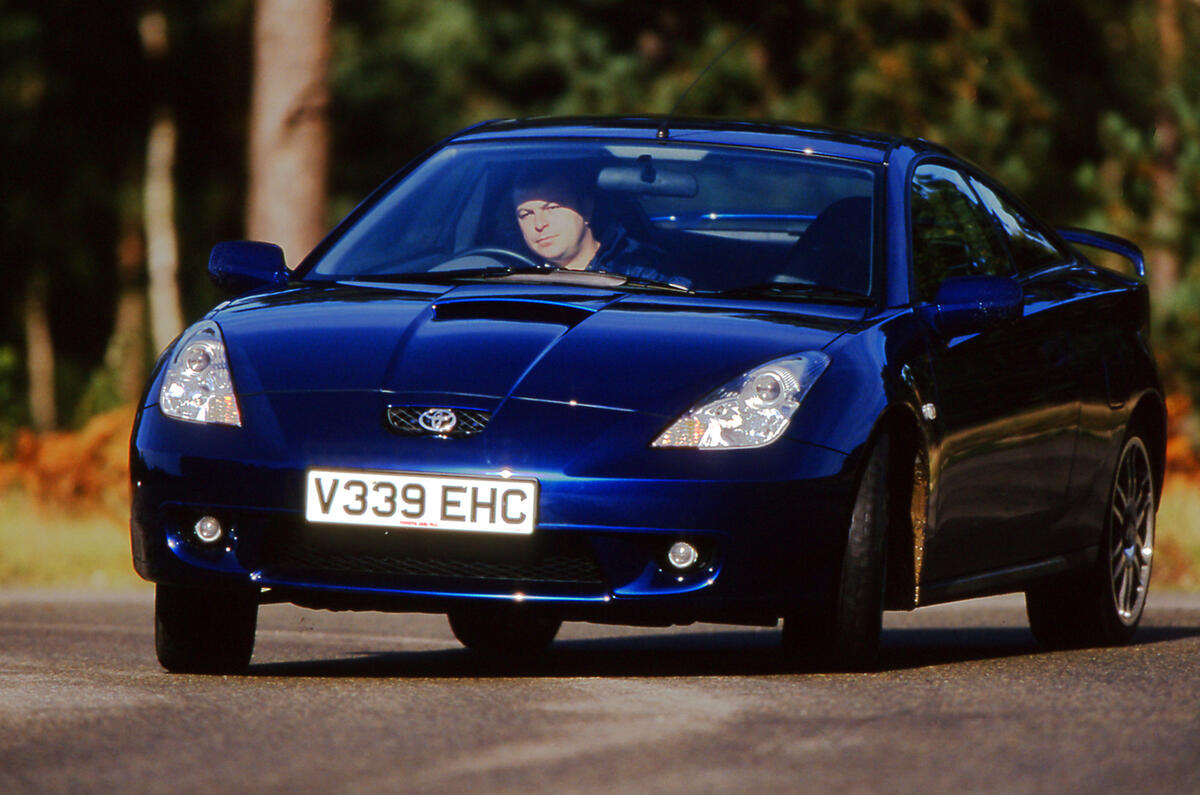When it was first shown as the XYR concept at the 1999 Detroit motor show, the designers of the seventh generation Celica claimed - a little improbably - that it was part-inspired by a closed-wheel, open-cockpit race car of the era.
Toyota's Californian CALTY design studio had the main shaping and scraping responsibilities for the clay model, and among other things, introduced a rising waistline suggestive of their racer.
In fact, the race car link had more substance than it first appeared, not because the concept had a borderline ludicrous twin stalk rear wing planted on its backside, but because this Toyota Celica had been designed to be lighter, defter and faster. Just like a race car, in fact.
To this end Toyota decided only to make a coupe, and not the convertible and four-wheel drive versions that had sometimes previously appeared. The structural complexity and extra heft required for these models could thus be ignored, while the Celica’s front and rear overhangs were shortened to cut mass and reduce its inertial resistance to turning. That the rear suspension was for the first time double wishbone was further evidence of Toyota’s sporting intent, as was a weight-shedding campaign that saw 30kg shaved from the engine.
When the real thing turned up a few months later it looked almost the same as the show car, less the speed shop rear wing.
As hoped for, the Celica delivered in the dynamic department too. The steering was responsive enough to startle a Toyota Crown cabbie in Tokyo, the Celica’s front-drive balance defiantly resisting understeer. The bitumen-skimming driving position, a zingy engine and a set of almost uninhabitable rear seats confirmed the sensation that you were driving a genuinely sporting car, even if 145bhp sounded a long way from dangerous.
Toyota soon remedied that with a more powerful 190bhp engine, although you needed the tacho needle to dance near the danger paint to tease out the extra horses. Great if you were on the right road, but unhelpful elsewhere, which is one reason why the 190, later rebadged T-Sport, makes a rarer find.
Despite being slimmed, the seventh-generation Celica fielded a more welcoming cabin than the most recent editions, mainly because it didn’t present you with a world of varyingly sheened black plastics and workaday cloth trim.
True, this time you got shades of grey, but some of those greys were plastiminium, all were of a higher textural grade and the cabin architecture was appealingly sculpted to create a twin cockpit feel for driver and passenger. The most striking element was the beak-like tip of the centre console’s top end, an unexplained but appealing flourish.





Add your comment